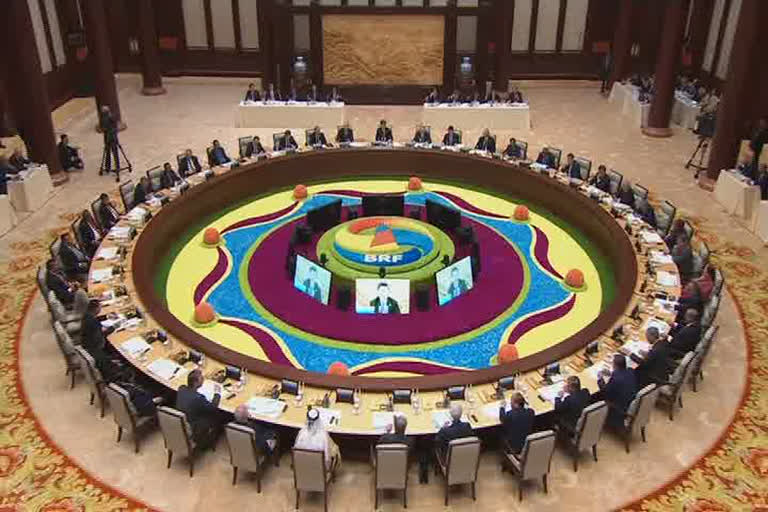Beijing: The Bangladesh, China, India, Myanmar Economic Corridor, originally listed in the China's multi-billion dollars Belt and Road Initiative projects, has been conspicuously missing from the new list issued at the end of the Belt and Road Forum meeting here.
China's high-profile 2nd Belt and Road Forum (BRF), in which 37 heads of state and governments took part, concluded Saturday with signing of deals worth USD 64 billion and affirming respect for sovereignty and territorial integrity towards Beijing's trillion-dollar Belt and Road Initiative (BRI), a key demand of India.
Like in first BRF meeting in 2017, India skipped the meeting over its objections on the China-Pakistan Economic Corridor (CPEC).
A joint statement issued at the end of the meeting carried an annexe mentioning names of "Economic corridors and other projects catalysed and supported by connectivity".
The CPEC, "the Nepal-China Trans-Himalayan Multi-Dimensional Connectivity Network, including Nepal-China cross-border railway" and the China-Myanmar Economic Corridor (CMEC) figured in the list from the South Asian region.
The Bangladesh-China-India-Myanmar Economic Corridor (BCIMEC), which has been previously mentioned as part of BRI when it was launched in 2013, did not figure in the list of 35 corridors mentioned in the new list of projects under the BRI.
India has been opposing the CPEC, a flagship of the BRI, as it passes through Pakistan occupied Kashmir (PoK).
The 2800-km BCIMEC proposes to link Kunming in China's Yunnan province with Kolkata, passing though nodes such as Mandalay in Myanmar and Dhaka in Bangladesh before heading to Kolkata.
The 1700-km CMEC would provide China another node to access the Indian Ocean.
Also read:Xi urges world leaders to join Belt and Road plan
The corridor will run from Yunnan Province of China to Mandalay in Central Myanmar. From there it will head towards Yangon, before terminating at the Kyaukpyu Special Economic Zone (SEZ) on the Bay of Bengal.
Similarly, the Nepal-China Trans-Himalayan connectivity network starts from Chengdu, from where it is linked to Tibet by the Sichuan-Tibet Highway, or the Sichuan-Tibet Railway.
It is proposed that the railway from Tibet will be further extended to Kathmandu, via Ya'an, Qamdo, Lhasa and Shigatse.
"We respect sovereignty and territorial integrity of each other and affirm that each country has the right and primary responsibility to define its development strategies in accordance with its national priorities and legislation," the joint statement said.
A total of 283 items of practical outcomes were achieved during the preparatory process and the holding of the forum, Xi said in a statement to the media after his round table meeting with world leaders.
"We must implement the principle of extensive consultation, joint contribution and shared benefits to see that all voices are heard, all reached their full potential and all stand to benefit," Xi said after the BRF.



